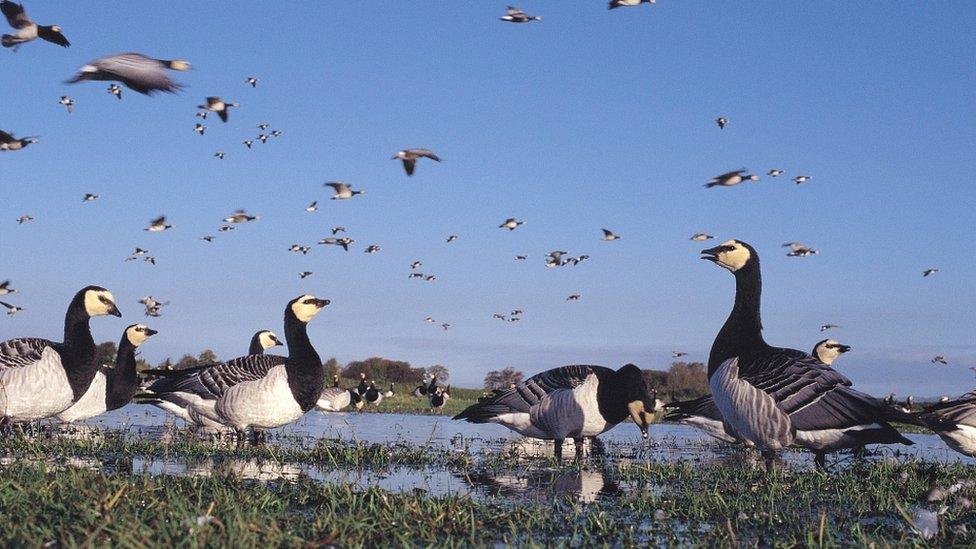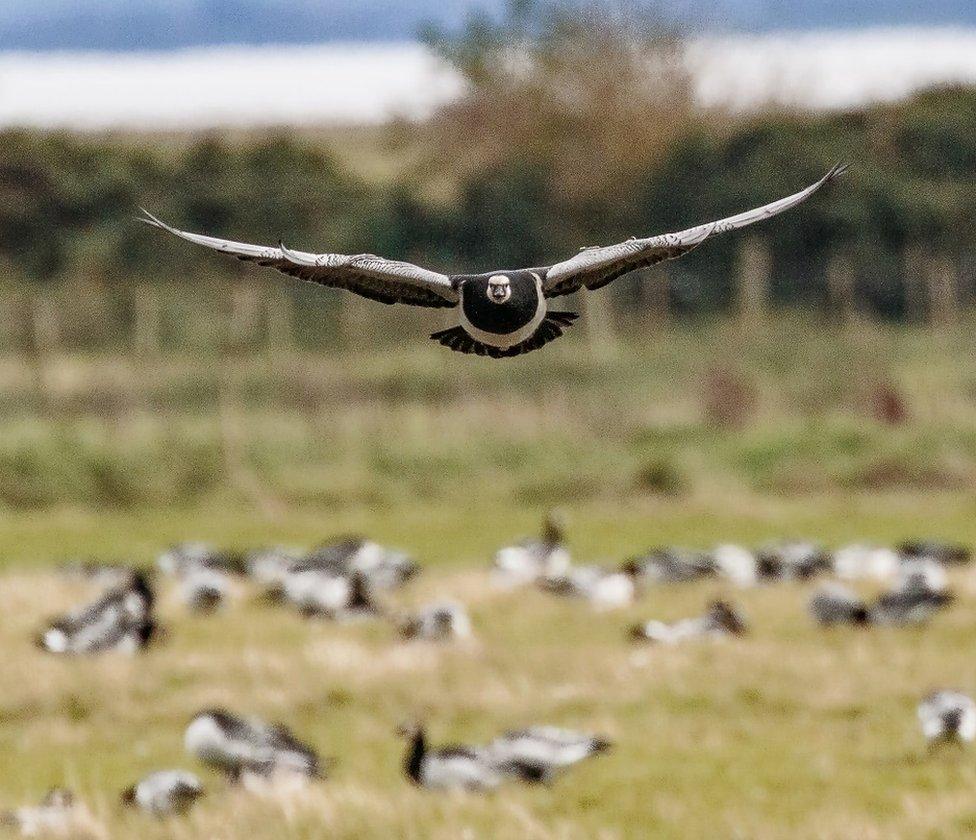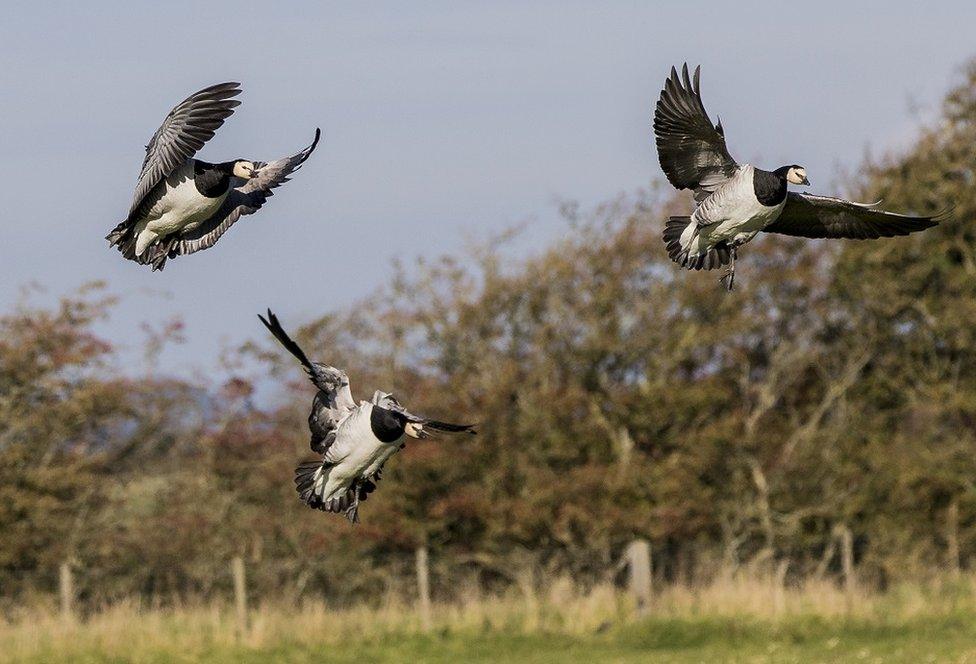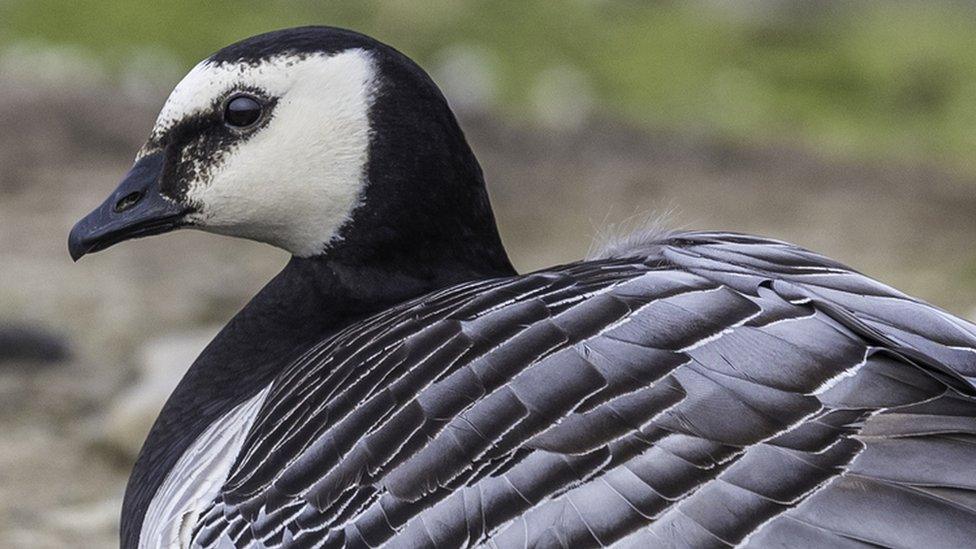Caerlaverock reserve prepares for return of barnacle geese
- Published

Staff on the reserve have been preparing the site for the return of the geese
Staff at a Scottish nature reserve are "excited but anxious" about the return of a migrating flock of geese which was devastated by avian flu last year.
Thousands of barnacle geese were lost at the Wildfowl and Wetland Trust (WWT) Caerlaverock site on the Solway Firth.
They have begun to return this year as they head south from Svalbard, north of the Arctic Circle.
Site manager David Pickett said there were mixed emotions after a "tough winter" last time around.
When the reserve was set up in 1971, the barnacle goose population was 3,700, but that number had risen to 40,000 by last year.

It has been estimated that about a third of the 40,000-strong flock was lost last year
It has been estimated avian flu has cut those numbers by a third.
Mr Pickett said the reserve was "braced and waiting" to see how many would return and how they would get on.
He said the last winter was one that no-one would forget after the seriousness of the outbreak - described at the time as "unprecedented" - started to emerge.
"It was pretty grim really, it was a situation that gradually grew on us," he said.
"We started finding small numbers of dead barnacle geese and then the numbers increased and increased as the winter went on.
"What we ended up needing to do was monitor the progress of the disease so we were doing regular counts to see how many fresh carcasses were appearing."

David Pickett said last year had been "pretty grim" at Caerlaverock
He added that this year all they could do was try to provide the best surroundings possible for the birds.
"We manage the reserve to give the geese undisturbed, good feeding when they arrive here in the winter," he said.
"That means getting the grass and the fields cut and then grazed so it's at the right length for the geese to make maximum use of it."
The first birds have started to arrive, prompting some nervous anticipation.

The region's wild goose festival takes place later this month
"We are now waiting to see what happens," said Mr Pickett.
"The first about 1,000 birds have turned up here just in the last week or so.
"We will be monitoring them to see whether we start to get any fatalities.
"We will be testing birds to see if they are dying of avian flu and we are just going to have to wait and see what actually happens."

Visitors to the festival will be able to see the birds from close range
Meanwhile, preparations are ongoing for the region's annual Wild Goose Festival running from 20 to 30 October.
It will allow the public to watch the flight of thousands of birds landing on the reserve.
Everyone will have their fingers crossed there is no repeat of last year's devastation.
Related topics
- Published18 December 2021
